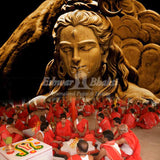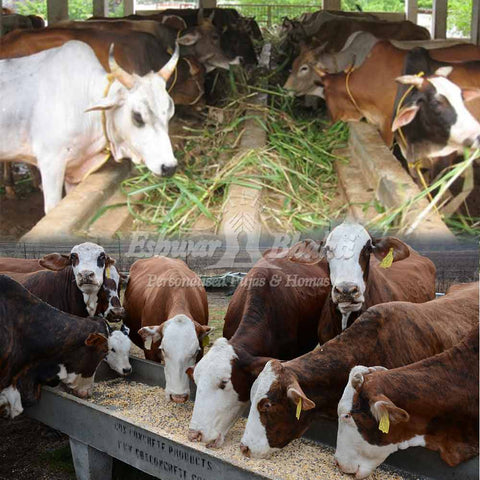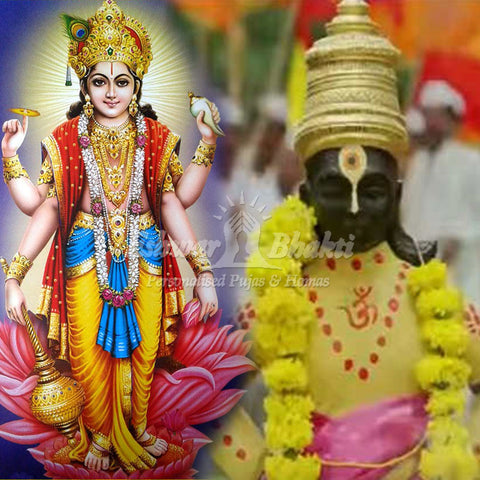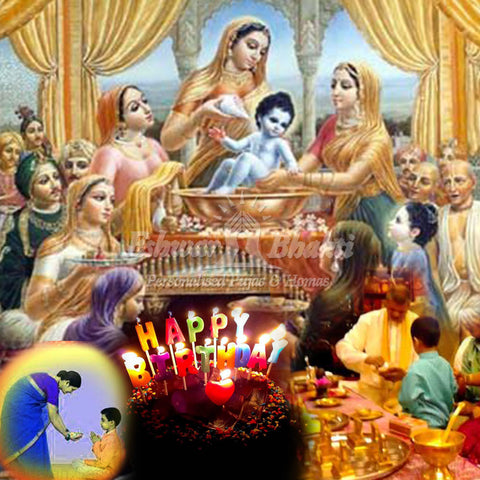Ati Rudra Yagna is a very important form of worship of Lord Shiva, the very source of cosmic energy for the entire creation. His Divine form encompasses and extends far beyond all known and unknown galaxies and universes. Lord Shiva is omnipotent, omniscient and omnipresent. He is the conqueror of Death and an embodiment of infinite mercy, compassion and love. We who owe our existence to the Divinity are duty bound to think of Him constantly and worship Him gratefully for the welfare of all mankind.
It rained both the times, we had performed the Ati Rudra Yagna, confirming the Puja was accepted by the Divine, in Oct-2013 and May-2016.
Please email us at contact@pujayagna.com expressing your interest in this Yagya.
Lord Rudra is a ferocious aspect of Lord Shiva, who is the embodiment of destruction and unlimited love. Rud means sorrow. Ra means destroyer. Rudra is the One who destroys our sorrows.
Ati Rudra Maha Yagna occupies a very important place in Vedic literature and in the practice of Vedic traditions. The Rudram is addressed to worship Lord Shiva, who will grant the devotee immediate relief from all problems and the fulfillment of wishes.
Sri Rudram hymn is an invocation to Lord Siva. Srirudram, also known as Rudraprasna, is a hymn devoted to Lord Shiva. It is part of the Yajur Veda and one of the greatest of the Vedic hymns for all round benefits and to remove all doshas & difficulties. In most of the poojas and homas it recited by the Vedic pundits. Sri Rudram is in two parts. The first part, chapter 16 of the Yajurveda, is known as Namakam because of the repeated use of the word “Namo” in it. The second part, chapter 18 of the Yajurveda, is known as chamakam because of the repeated use of the words “Chame”. Namakam sings the glory of Lord Siva and Chamakam is requesting the Lord to grant the devotee materialistic and spiritual grace so that he/she can elevate himself/herself and serve Lord’s creation in this universe. Each of Namakam and Chamakam consists of 11 chapters called “Anuvakams”. In the first Anuvaka, Rudra is asked to turn away his Ghora rupa (fierce appearance) and to please keep his and his followers’ weapons at bay. Having been pacified, Rudra is requested to destroy the sins of those for whom it is being chanted.
Sage Satapatha in his treatise “Maharnava Karma Vipaka” listed four types of Abhisheka procedures compatible with Vedic and scriptural lore. Those are Rudram, Ekadasa Rudram, Maha Rudram and Ati Rudram – each being more potent than the preceding one. Of these, the most potent form of Ati Rudram involves 14641 Rudrams (Rudram is a combination of Namakam and Chamakam given in Rudradhyayam in the 5th Prapathakam of the 4th Kanda of Krishna Yajur Veda Samhita).
* Routine chanting of Sri Rudram is called "Roopam" and consists of chanting the Namakam once followed by chanting the Chamakam once.
* Eleven recitations of Namakam followed by one recitation of Chamakam are called "Ekadasa Rudram".
* Eleven rounds of Ekadasa Rudram chanting constitute a "Laghu Rudram".
* Eleven rounds of Laghu Rudram chanting constitutes a "Maha Rudram", and
* Eleven rounds of Maha Rudram chanting constitute an "Ati Rudram".
If 11 priests chant Ekadasa Rudram simultaneously that would result in completing a Laghu Rudram. If 121 Ritviks chant Ekadasa Rudram simultaneously that would result in completing a MahaRudram. Typically, a MahaRudram is completed in 1 day resulting in the chanting of the Rudram 1331 (121x11) times. If a MahaRudram is repeated for 11 days then we would have completed an Ati Rudram during which the Sri Rudram would have been chanted a total of 14,641 (121x121) times.
The Service includes:
* 11 Homa Kundas will be setup for the sacred fire ceremony, along with the main Homa Kunda.
* Each Homa Kunda will have 1 Priest and 10 Ritviks who are fluent in chanting Sri Rudram. Thus there will be 121 Homa kartas combined around the 11 Homa Kundas.
* Daily Brahman Varan and donation to priests.
* Daily puja of Pradhan Mandal, Maha Kali- Maha Saraswati-Maha Lakshmi Mandal, Shetraphal, Das Dikpal, ten directions, Vastu Mandal, Vishnu Puja, Navgraha Mandal puja.
* Daily event will start with Rudra Abhishekam of SivaLingam.
* Abhishekam will be followed by Ekadasa Rudra Homam (sacred fire ceremony) by the 121 Homa kartas.
* On each of the 13 days, the daily event will start at 8 AM and conclude around 4 PM.
* There would be prasadam food offering to all 121 priests for half hour at around 12:30 PM.
* There will be music offering and evening worship including bhajans and satsang.
* Daily Aarti and Pushpanjali.
* Daily video recording of the puja.
* Energising Shiv Yantras and several Rudrakshas daily.
* Grand finale will be on the 13th day.
This Maha Yajna is generally performed for Loka Kalyana (good of all mankind), as well as to ensure universal peace and prosperity.
An erudite controller, Maha Mandaleshwar or Shankaracharya, can be called on special request to oversee the performance of the Maha Yagna.
The power available during the performance of this yajna is of such a high magnitude that Yogis and Tantriks activate mantras and become recipients of great magical occult secrets. The sick become well, the unmarried find ideal mates, debts are removed, wealth & power is showered and death is evaded. Our salutations, to the creator, to the destroyer, to the bestower of grace, wealth, power, health, happiness. He is the union of both male & female energies he is the great SHIVA. It is said the key of Lord Kubera's wealth is hold by Lord Shiva. All nine planets are supposed to be under the domain of Shiva and hence his propitiation leads to gains in Career, Job, Business, Relationship, Marriage and Health. It is said that Lord Shiva and His consort Mother Annapoorna blesses with all the 8 types of wealth.
Keivalyo Upanishad says: "namakam chamakam hotran,purush-suktam japet sada, pravishet sa Mahadeva graham grahapatiryatha"
Meaning: by Namak Chamak Mantras (used in Atirudra) the person enters the abode of Lord Shiva without any fear and with certainty.
The Ati Rudra Maha Yagna, can be performed in two ways:
1. Abhishekatmak: Abhishek is a process of continuous pouring of milk on the Shivling, sanctified by Vedic rituals with Jal-shayan (water), Anna-shayan(food), Pushpa-shayan (flowers) etc while chanting the Namakam Chamakam.
2. Havantamak: Oblations are offered in the Havan kunds with every chanting of Namak Chamak. Simultaneously, the Abhisheka of Crystal Shivlingam will also continue. Thus, it would translate to having two Ati Rudras simultaneously.
Duration: 13 days - 7 hours daily
No. of priests: 121
We have earlier successfully organised the Ati Rudra Maha Yagna - Havnatmak form, in Nagpur city, India, between 19th – 29th October, 2013 under the Auspicious Presence of Mahamandaleshwar Swamiji Shree Dayanand ji Saraswati ji.
Eshwar Bhakti priests will perform your Puja as per the Vedic procedure. The Puja prasad, Shreyodaan, Vibhuti, Rudraksha and Yantras with daily DVD will be sent to you through courier. This is an individual Puja (you may book puja only on your name or include your near/dear ones in your puja).
Please email us at contact@pujayagna.com expressing your interest in this Yagya.
Performing your puja ritual with love and utmost care is our motto. We perform only Individual Personalized rituals. No group rituals. Here are the key steps to help you understand the process:
 You add a ritual to your shopping cart, after reading the benefits and based on your concerns.
You add a ritual to your shopping cart, after reading the benefits and based on your concerns.
 At the time of booking your ritual(s), you are asked to provide your "Name, birth details, Sankalpa and instructions" on the shopping cart page. You can also mention your Gotra, Nakshatra and Rashi details there (if you know).
At the time of booking your ritual(s), you are asked to provide your "Name, birth details, Sankalpa and instructions" on the shopping cart page. You can also mention your Gotra, Nakshatra and Rashi details there (if you know).
 Immediately after the receipt of your order, we start identifying the most auspicious date and time to perform the ritual.
Immediately after the receipt of your order, we start identifying the most auspicious date and time to perform the ritual.
 An email is sent to you within 12 hours of order confirmation, which would comprise:
An email is sent to you within 12 hours of order confirmation, which would comprise:
1. Date on which your puja would be performed.
2. Complete timings and duration of your ritual.
3. Sankalpa time: When you can join us and pray for the fulfillment of your wish.
4. Zoom meeting details for taking the Sankalpa.
5. Mantra and meditation instructions to follow at your end.
6. Dietary precautions on the day of your puja.
7. List of some easy to get items, to take the Sankalpa.
 You can also email us your photo, at contact@pujayagna.com, to keep during the performance of your puja (optional).
You can also email us your photo, at contact@pujayagna.com, to keep during the performance of your puja (optional).
 On the scheduled day and time, you can join over Zoom to take your Sankalpa (optional). You will be guided during the call to take the Sankalpa.
On the scheduled day and time, you can join over Zoom to take your Sankalpa (optional). You will be guided during the call to take the Sankalpa.
 Immediately after the successful completion of your ritual, an email is sent with photos/videos of the ritual.
Immediately after the successful completion of your ritual, an email is sent with photos/videos of the ritual.
 In case of rituals lasting over several days, you will receive daily updates over email, WhatsApp or Viber.
In case of rituals lasting over several days, you will receive daily updates over email, WhatsApp or Viber.
Have more queries, read Frequently Asked Questions.













 Related Pujas
Related Pujas 
















